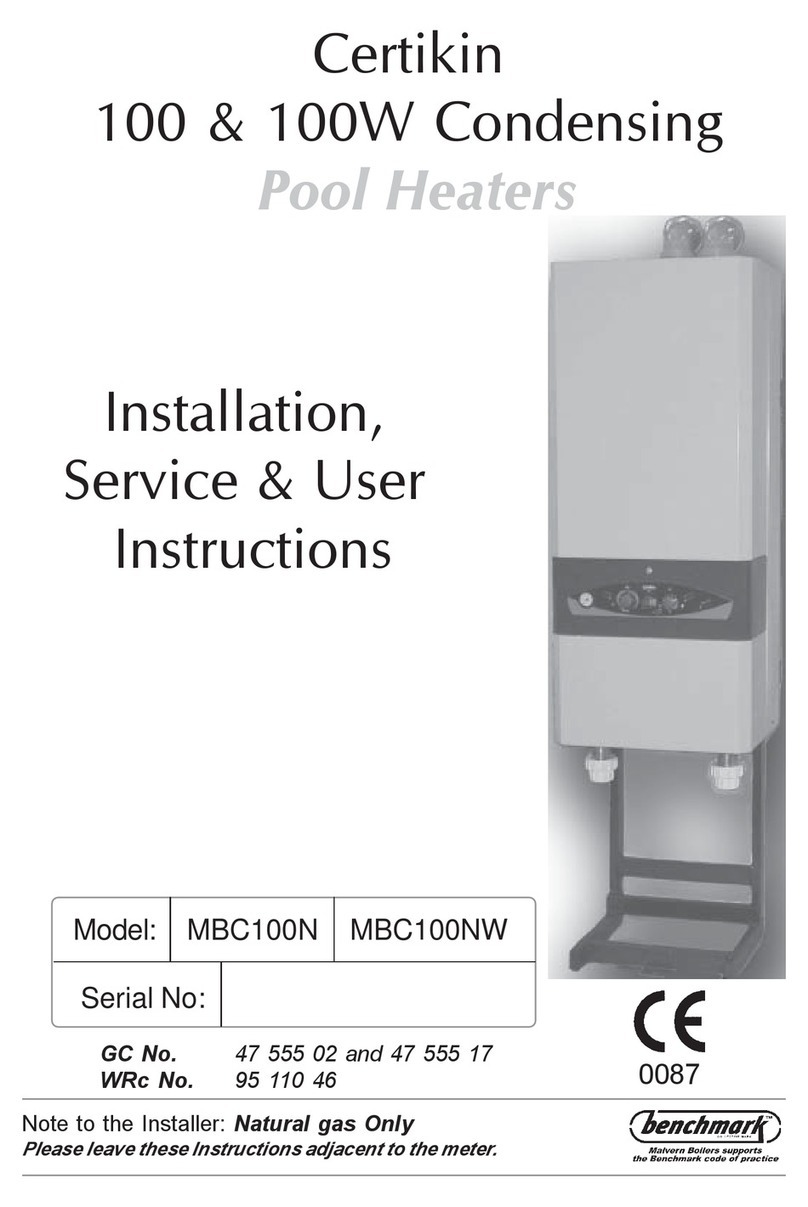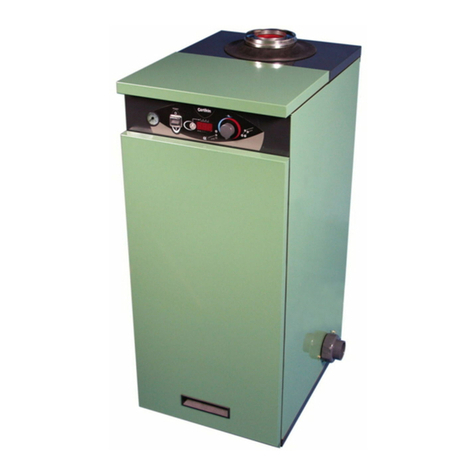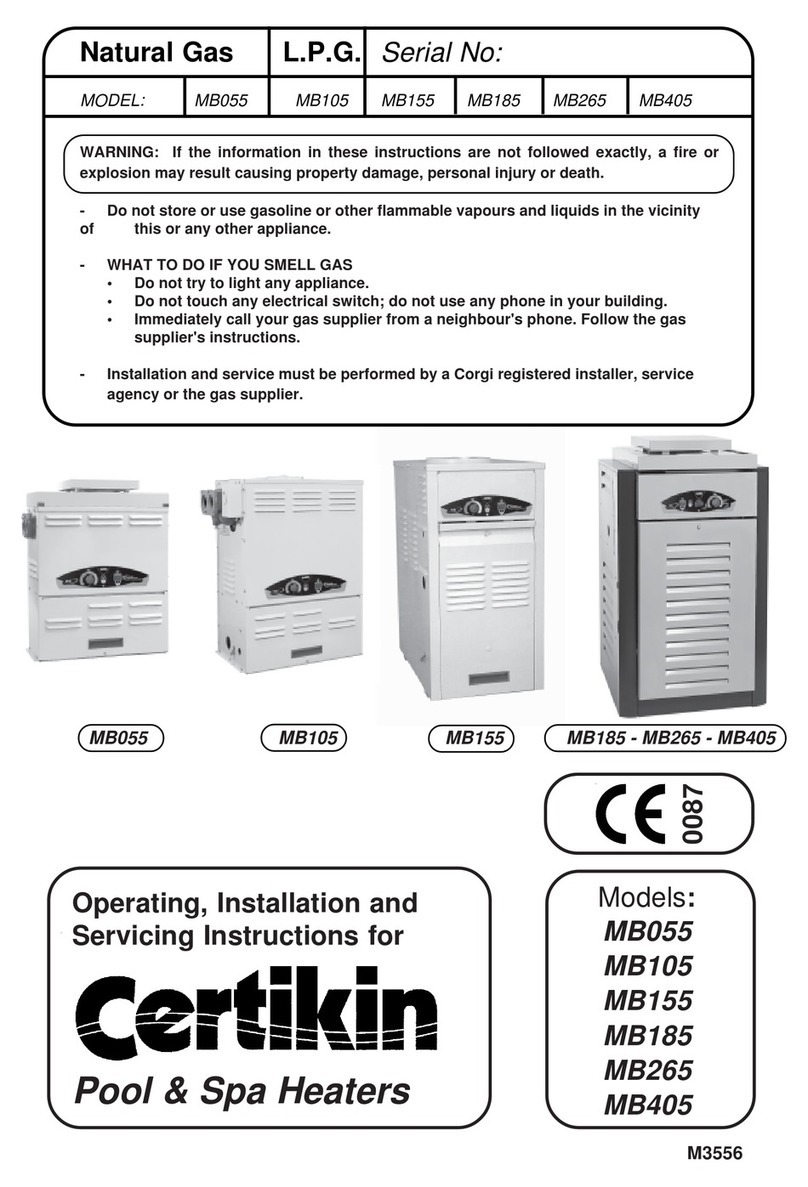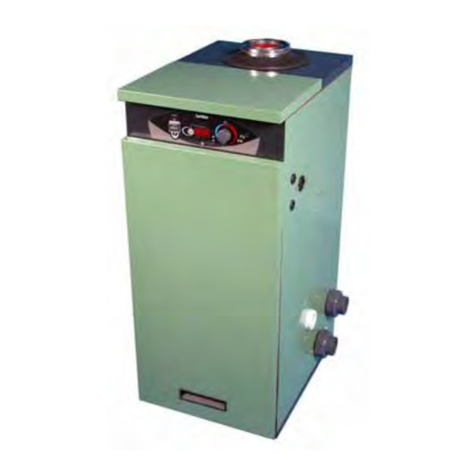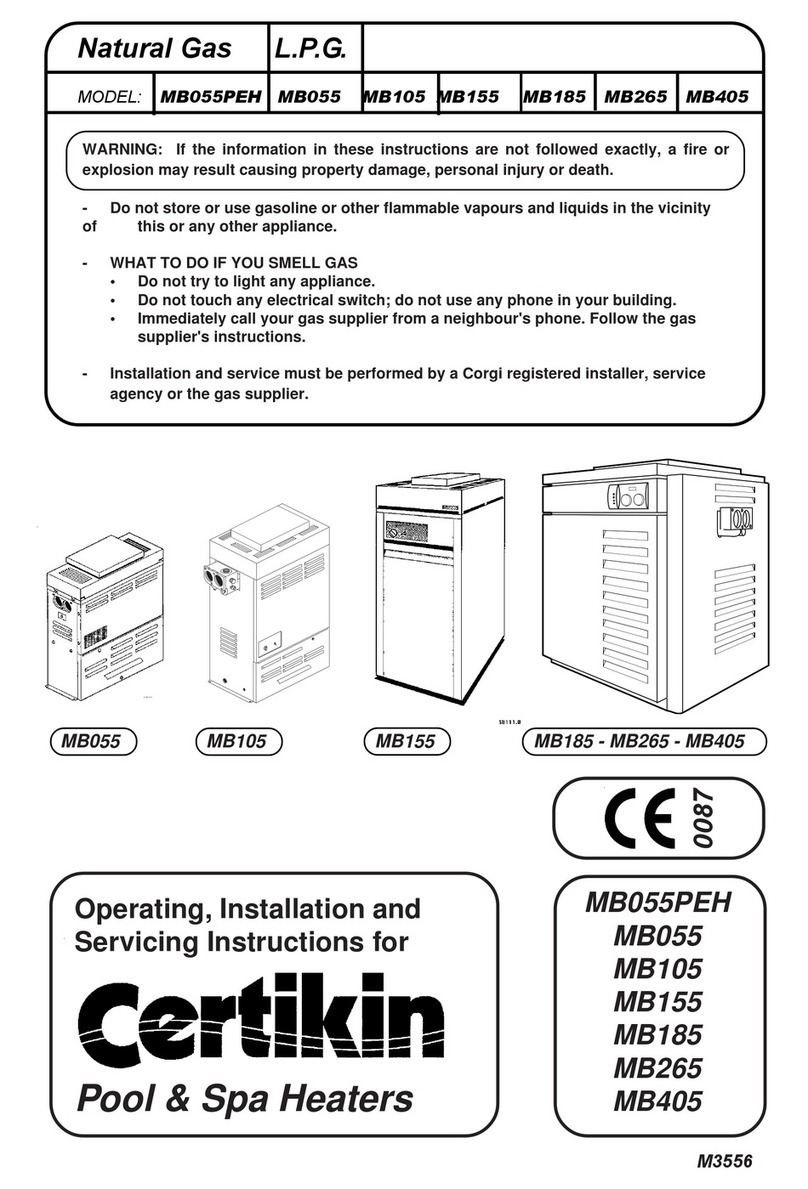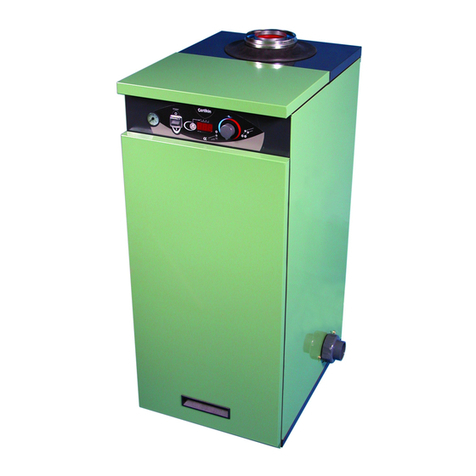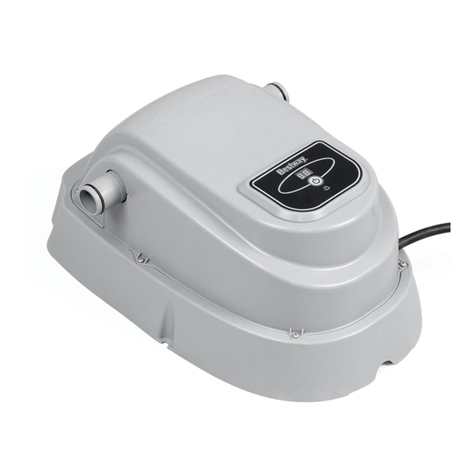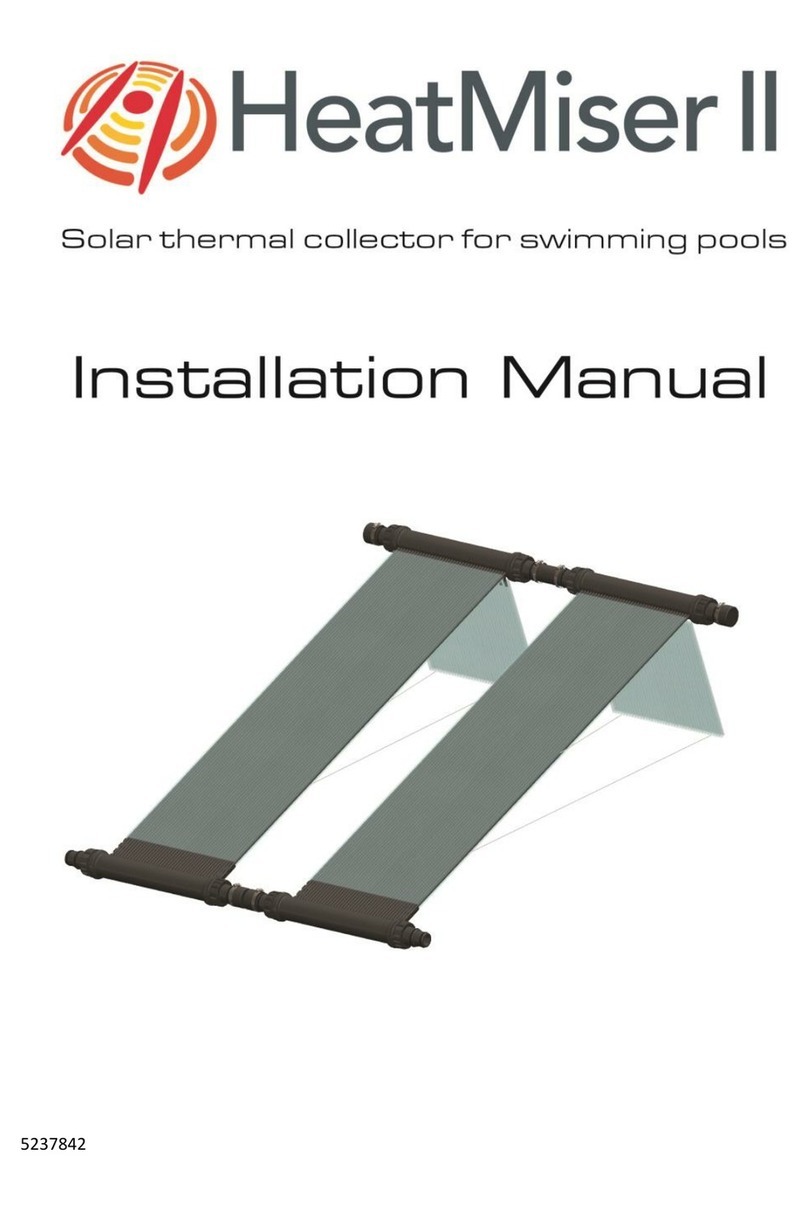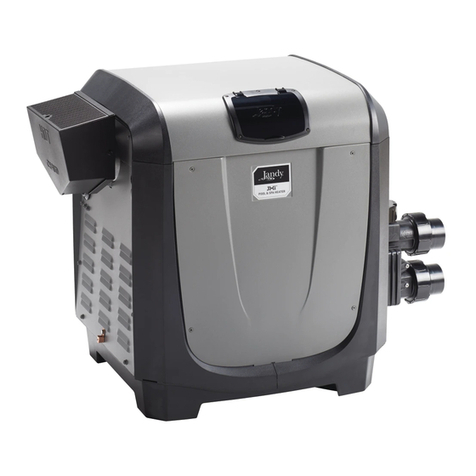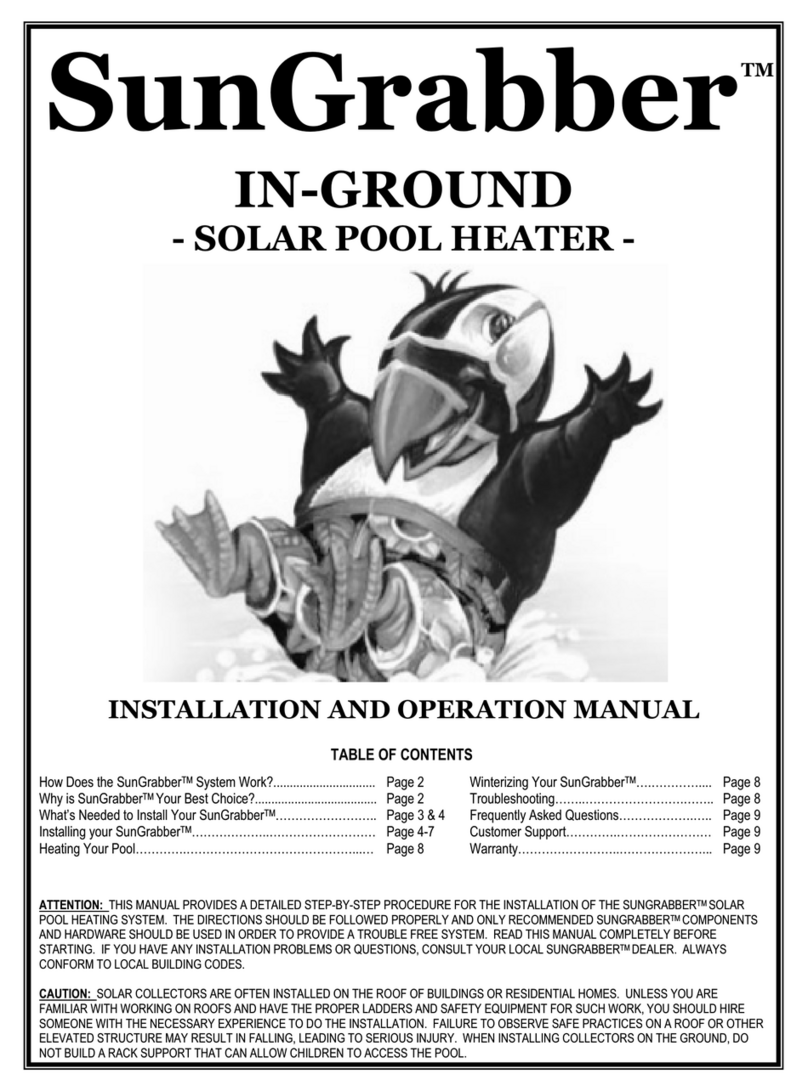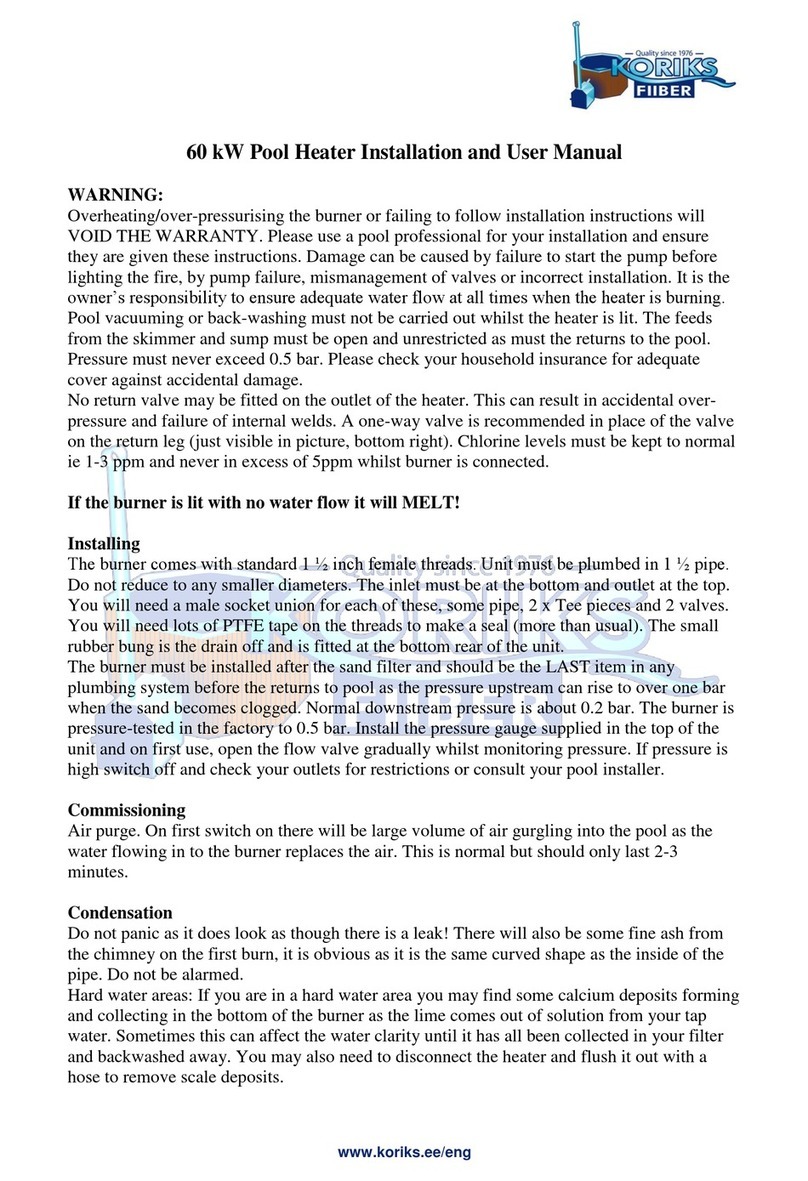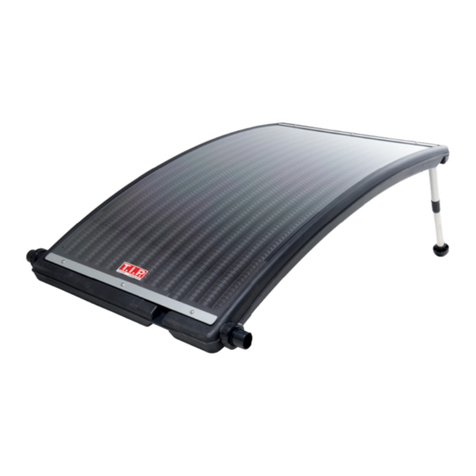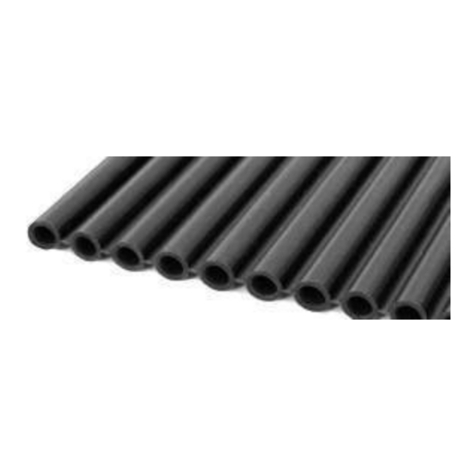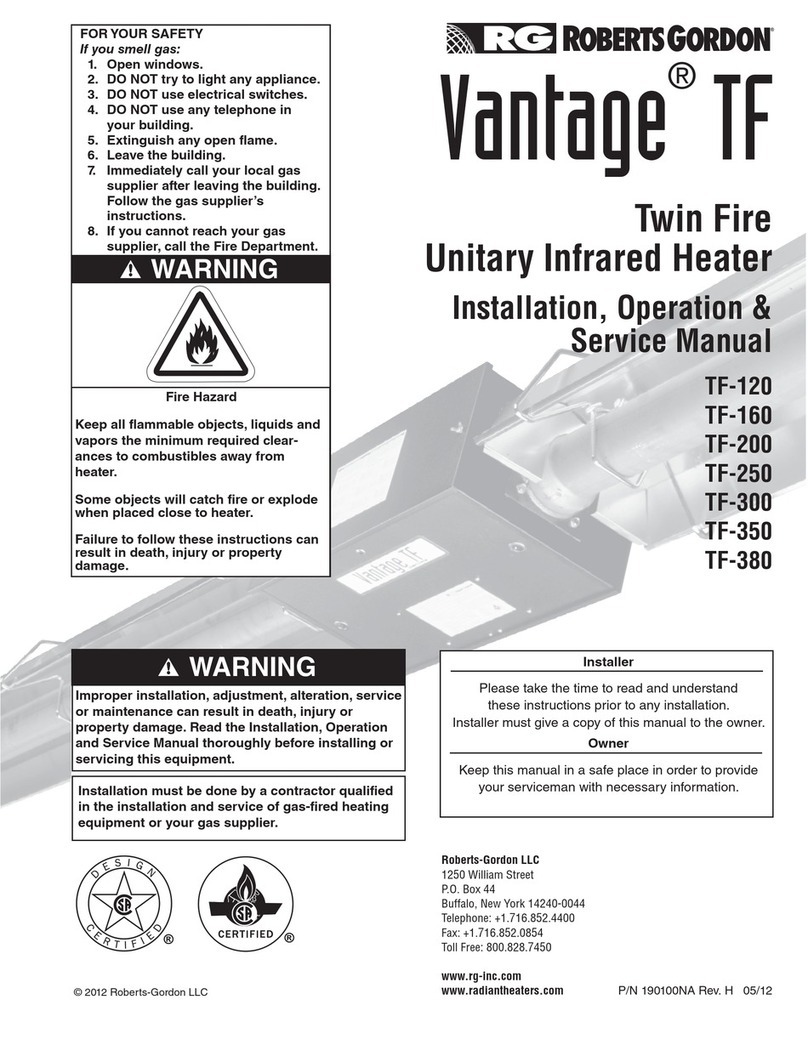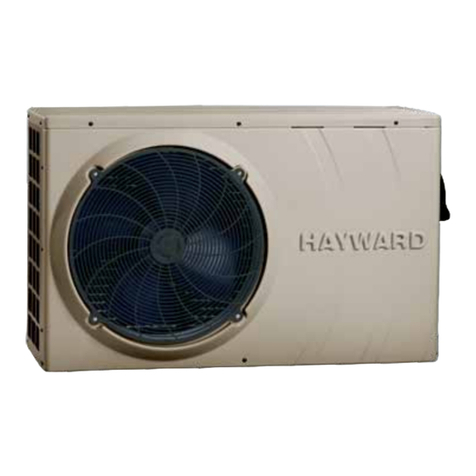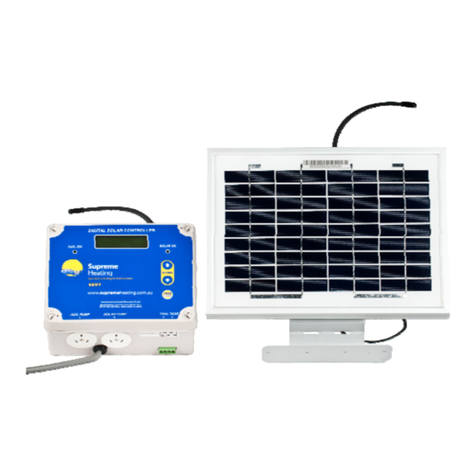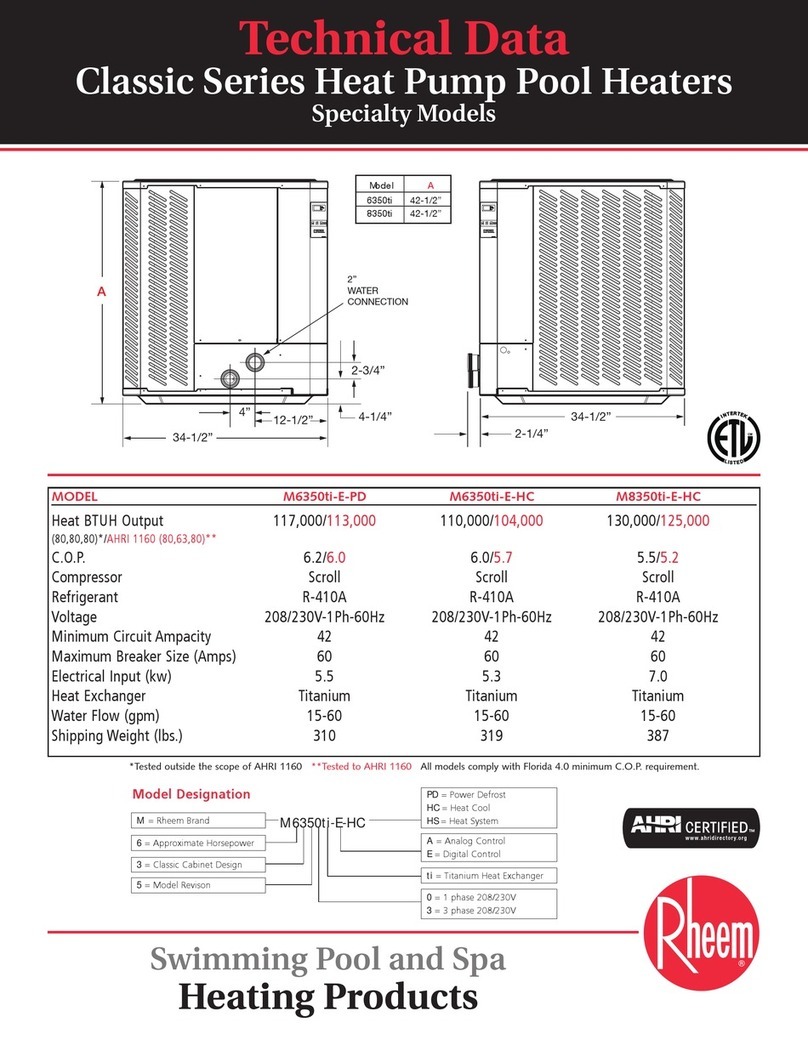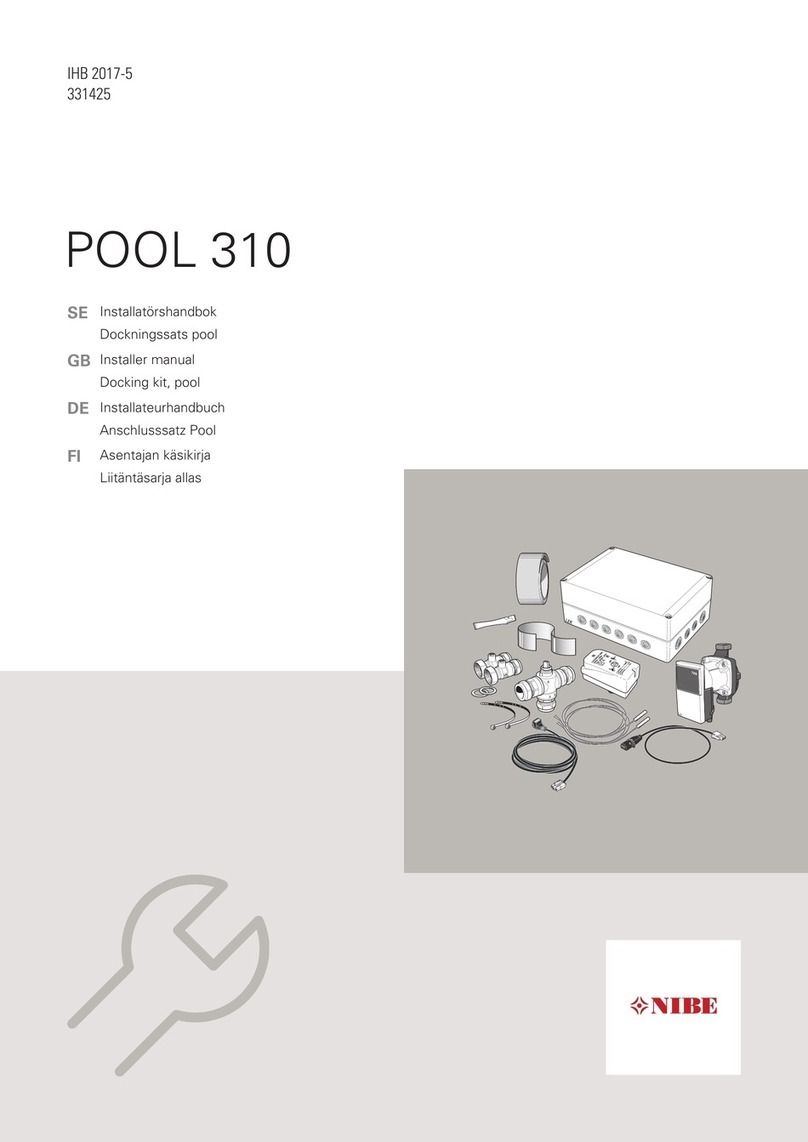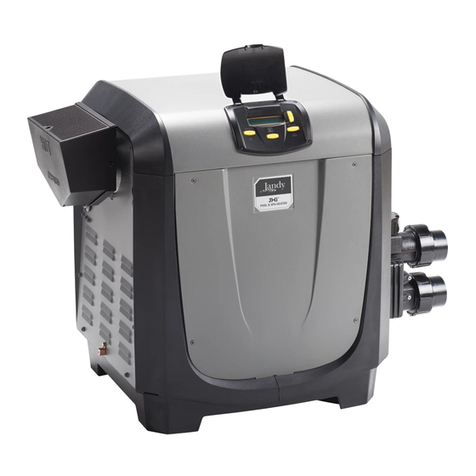
Water Undertaking, any relevant requirements of the
Local Authority, and Health and Safety document No
635, “Electricity at at Work Regulations”. Detailed
recommendations are contained in the following
British Standard Codes of Practice.
Codes of Practice.
BS.6798 Installation of gas fired hot water boilers of
rated input not exceeding 70kW.
BS.5440: Part1 and Part 2. Flues (for gas appli-
ances of rated input not exceeding 60kW).
BS 6891 Specification for installation of low pressure
gas pipework.
BS5482:1 Code of practice for domestic butane &
propane gas burning installations.
Building Regulations Part L1.
IMPORTANT.It is important that no external
control devices are directly connected to this appli-
ance - unless covered by these ‘Installation and
Servicing Instructions’ or otherwise recommended
by the manufacturer. If in doubt, please enquire.
Any direct connection of a control device not
recommended by the manufacturer could infringe
the Gas Safety (Installation & Use) Regulations, the
above regulations and the normal appliance war-
ranty.
Manufacturer’s notes must NOT be taken, in any
way, as overriding statutory obligations.
Location of Heater
The Heater MUST be installed on a flat and level
floor or wall, capable of adequately supporting the
weight of the Heater and any ancillary equipment.
Provisionis provided fortheheater to befixed to the
floorand a kitis available forwallmounting.
It is IP 44 Rated and can be installed outdoors in a
suitable position. In all cases the choice of position
should take into account the flue, the plume and
condensate drainage.
IMPORTANT NOTICE.
If the Heater is to be fitted in a timber framed build-
ing it should be fitted in accordance with the British
Gas publication ‘Guide for Gas Installations in
Timber Frame Housing’, reference DM2. If in doubt,
advice must be sought from the Local Gas Region of
British Gas.
The Heater may be installed in any room or internal
space. Particular attention is drawn to the require-
ments of the current I.E.E Wiring regulations and, in
Scotland, the electrical provisions of the Building
Regulations applicable to Scotland with respect to
the installation of the boiler in a room or internal
space containing a bath or shower.
Condensing Pool Heater 301/07/09
TheseInstructionscover an indirect, floormounted,
gas fired, condensing pool and space heater which
is room sealed and fan assisted. The flue system
available is concentric, left, right, rear, and vertical,
all up to 20 metres ‘FEL’. There is also an Outdoor
Top terminal for use where the Heater is installed
out of doors. The ignition system is fully automatic.
The Heater is designed to also provide a heating
output suitable for a number of radiators or an
indirect Hot Water cylinder.
There is one model - see the Technical Data on
Inside Cover for details. The Heater can be in-
stalled in multiples to obtain a larger, combined
output.
The casing is of green and black polyester powder
coated mild steel. The Heater uses a high perform-
ance stainless steel heat exchanger and is suitable
for connection to pools using chlorinated and salt
chorinated water provided the following levels of
chemicals are maintained.
pH 7.2 to 7.8
Total Alkalinity 80 to 140 ppm
Calcium Hardness 200 to 400 ppm
Salt maximum 30000 ppm
Free Chlorine 1 to 4 ppm
All chemicals must be introduced and completely
dilutedintothepoolwaterbeforebeingcirculated
throughafiring heater. Do notplacechlorinetablets
or bromine sticks in the skimmer, high chemical
concentrations will result when the pump is not
running.TurntheHeateroffwhenshockdosing
Chlorinators must feed downstream of the heater
and have an anti-siphoning device to prevent
chemical back-up into the heater when the pump is
shut off.
NOTE: High chemical concentrates from feeders
and chlorinators that are out of adjustment will
cause corrosion to the heat exchanger in the
heater. Such damage is not covered under the
warranty.
Gas Safety (Installation and Use)
Regulations, (as amended).
It is the law that all gas appliances are installed by a
competent person (e.g. a Gas Safe registered
operative) in accordance with the above Regula-
tions. Failure to install appliances correctly could
lead to prosecution. It is in your own interest, and
that of safety, to ensure that the law is complied
with.
The installation of the Heater MUST also be in
accordance with the current I.E.E. Wiring Regula-
tions, the Local Building Regulations, Building
Standards (Scotland), the Bye Laws of the Local
INTRODUCTION
